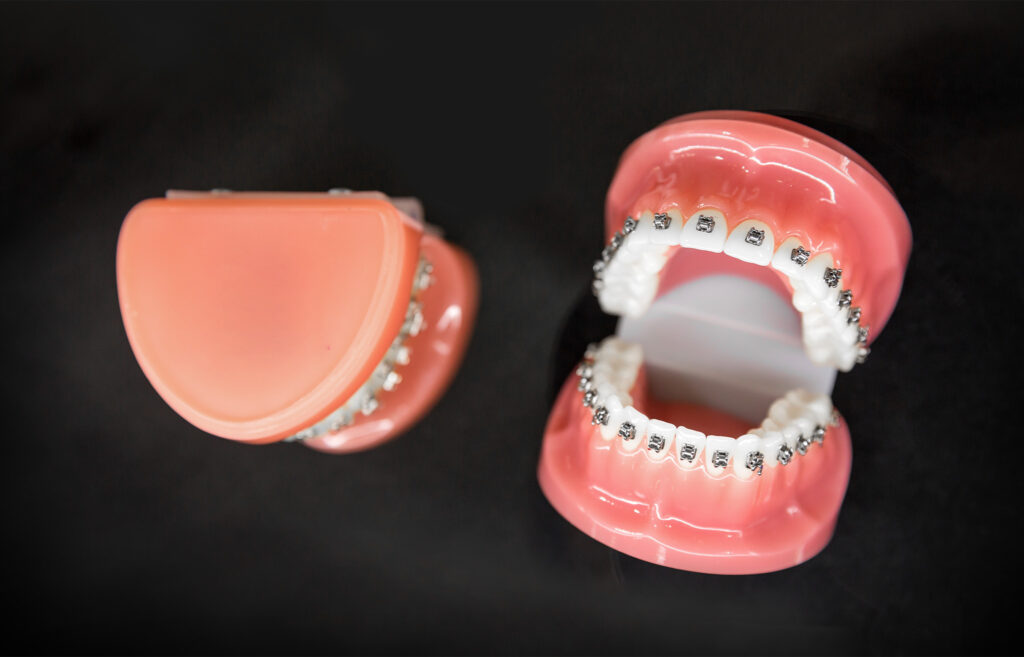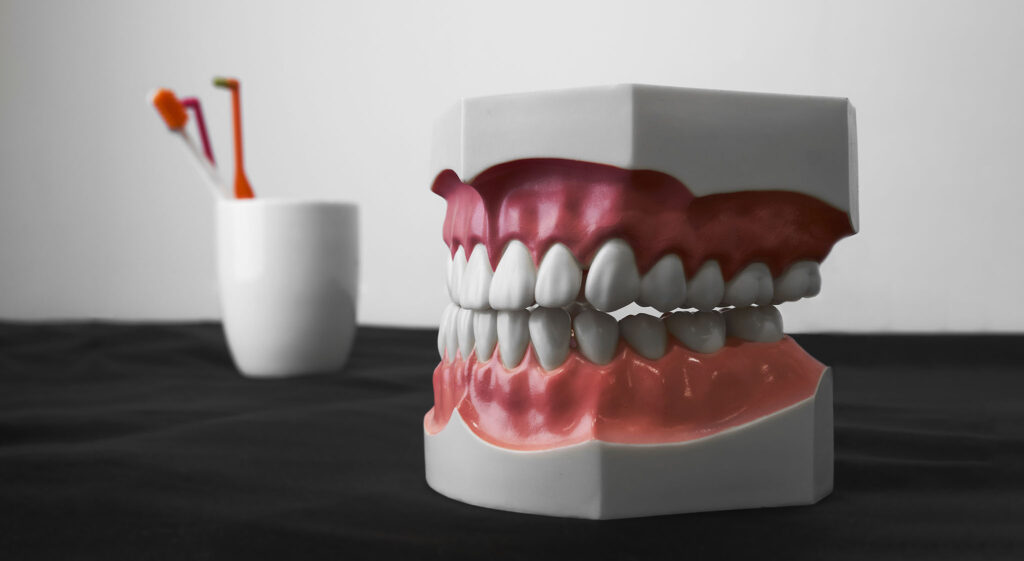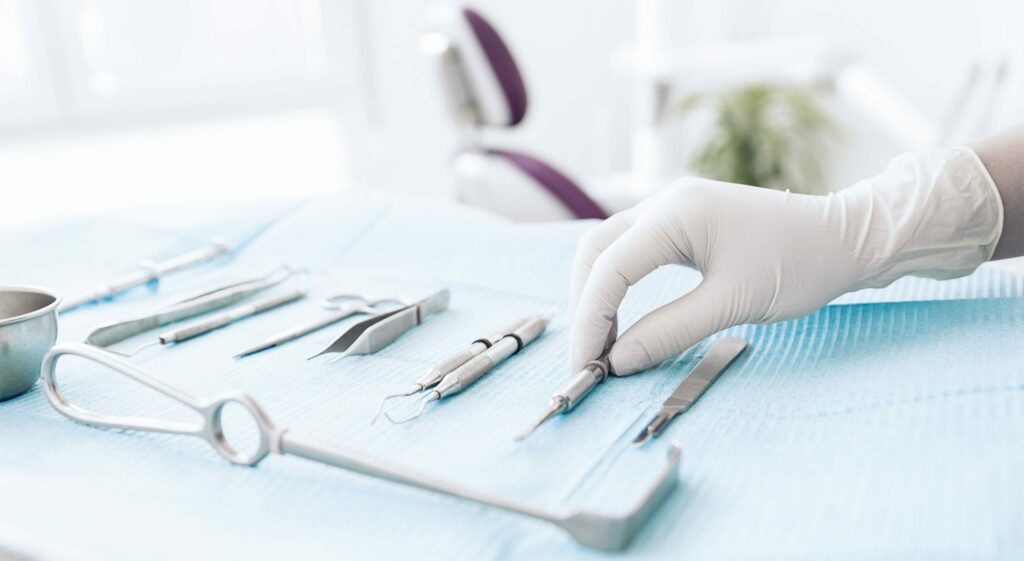
Salivary gland diseases
Salivary glands are an important part of keeping your mouth healthy and functional. Without saliva you will have a range of problems from dry mouth to periodontal disease. Therefore salivary gland diseases can cause major disruption, which can be avoided or caught early by regularly seeing your dentist and attending routine cleaning procedures.
The most common salivary gland diseases are salivary gland cysts, salivary gland infections, salivary stones (sialolithisasis), Mucoceles and Ranulas. Some are more serious and require surgery, while others may just require antibiotics.
What are salivary glands?

Salivary glands are an essential part of the ecosystem that is a human mouth. The saliva, which enters through small openings called ducts, benefits every function the mouth performs:
- It helps eliminate bacteria reducing risk of decay, in a dry mouth they can multiply rapidly.
- It helps you taste by dissolving chemicals into the food, a dry mouth can reduce taste and therefore enjoyment.
- It helps moisten food to make it easier to swallow, which would be dangerous with a dry mouth.
- It starts to break down starches to aid with digestion, while a dry mouth could cause digestion problems.
- It lubricates your dry mouth, allowing clearer and fluent speech
Your mouth has two categories of salivary glands, major and minor. Major salivary glands are both the most important and also the largest, which is because they need to produce most of the saliva in your mouth.
Major salivary glands fall into these three pairs:
- Parotid Salivary Glands
These are the largest and are found before the ears. They pass saliva through a duct near the upper second molars
- Submandibular Glands
Middling in size, these are found below the jaw and pass to a duct under the tongue.
- Sublingual Glands
The smallest of the major salivary glands, these are under the floor of your mouth, beside the tongue.
Unlike the larger major glands, minor salivary glands appear in the hundreds and cover the inside of your mouth and throat. These provide a lighter layer of moisture within the mouth, to keep it from becoming dry.
Since saliva, and therefore salivary glands, are so important for maintaining proper oral health and function, any concerns should be assessed by your dentist as soon as possible.
Most common salivary gland diseases and their treatment

As mentioned previously, salivary glands are essential and therefore are imperative to keep functional. Any condition that affects the salivary glands and their production of saliva can massively disrupt the ecosystem in your body and thus should be diagnosed and treated as soon as possible. These are some of the most common salivary gland diseases:
Salivary gland infections
Salivary gland infections are one of the more common conditions that affect the salivary glands. These are often caused by bacterial infections, with Staphylococcus aureus (A type of staph infection) being the most common cause of salivary gland infection.
However, viruses such as HIV, Mumps, and herpes can also cause damage and disruption to the salivary glands. Additionally, older patients must make sure to take care as they are at a higher risk of catching bacterial salivary infections.
Symptoms include:
- A foul taste in the mouth, that persists despite cleaning.
- An inability to fully open your mouth, due to pain or swelling
- Pain and discomfort in the mouth when eating
- A pus like discharge in the mouth
- Enlargement of the salivary glands
- Dry mouth
- Pain, redness, and swelling in the face, neck, and jaw.
- Standard signs of infection such as a fever.
Diagnosing a salivary gland infection will begin with a visual exam. The dentist will check for enlargement of the salivary glands, as well as look for pus and other symptoms mentioned above.
Once the infection is confirmed, further imaging can be used to identify the root causes of infection, ruling out salivary stones (sialolithiasis), tumours, and abscesses. These scans can be a combination of ultrasound, MRI, and CT scans.
Treatment for salivary gland infections vary depending on the severity and the cause. Bacterial infections are often treated with the use of antibiotics and draining pus from abscesses to disinfect the area. Once treated, we recommend the following to aid the recovery:
- Stay hydrated by drinking at least 8 cups of water a day. It helps to add lemon as it encourages production of saliva.
- Massaging the swollen area
- Applying a warm compress to the area.
- Rinse and gargle with a warm salt water solution
The majority of salivary gland infections are not severe enough to warrant surgical intervention. However, if there are underlying causes such as tumours it is possible that they may need to be removed surgically.
Ultimately, preventing salivary gland infections involves maintaining proper oral hygiene and keeping hydrated. Oral hygiene can be improved by following your dentist’s advice, as well as booking regular cleaning appointments with your dental clinic.
Salivary stones (Sialolithiasis)
Salivary stones are small hard deposits of minerals that form within the ducts of the salivary glands. These salivary stones block the flow of saliva in the mouth, which can lead to a disruption in many aspects of your life.
Luckily salivary stones are usually not serious and can often be removed at home. If the stone does naturally dislodge, and you cannot easily remove it yourself, visit your dentist to have it removed.
To aid in the natural removal of the salivary stone, here are some things to try:
- Sucking on lemon or lemon flavoured sweets. This helps promote saliva production which can push out the stone.
- Keeping hydrated by drinking at least 8 cups of water a day. This again helps saliva production.
Salivary stones are somewhat unknown since there is no specific cause. Factors such as age, smoking status, and hydration can all play a part, however.
Symptoms of salivary stones include:
- Swelling and pain around the gland
- Enlargement of the salivary gland
- Nausea when eating or thinking about food.
- Dull pain in the general area of the mouth
- Signs of salivary gland infections.
If signs of a salivary gland infection or cysts are present, please contact your dentist as soon as possible, to avoid further complications.
Mucoceles and ranulas
Also known as an oral mucous cyst, mucoceles are small, moveable, and painless lumps found around salivary gland ducts. More specifically, salivary gland cysts on the floor of the mouth are known as ranulas, while the rest are mucoceles. Ranulas are rarer but due to the location and their larger size, they have increased discomfort and risk. Salivary gland cysts are caused by a build-up of saliva within the duct, caused by a blockage. Salivary glands can become blocked due to salivary stones, salivary gland infections, or damage and trauma to the face and mouth.
As the saliva starts to pool, the duct can become walled off as the mouth tries to repair itself, making it hard to treat. Symptoms such as minor discomfort and swelling are common with smaller salivary gland cysts, though this is often as far as it will go. Larger cysts naturally will present more obstruction and discomfort in the mouth and have an increased risk of getting damaged leading to a rupture.
Often diagnosis is as simple as the dentist observing the lump, but if confirmation is needed a biopsy or ultrasound can be performed to rule out other causes.
To treat a fully formed salivary gland cyst, there are two clinical options that could be done:
The first treatment being removal of the gland. If the gland is small enough it can be removed entirely with a small incision or with a laser, using local anaesthesia to prevent pain.
The second treatment is for larger salivary gland cysts, in which the surgeon helps form a new duct in a process called marsupialisation.
The surgeon will:
- Disinfect the area
- Put a single stitch in the cyst and tie a knot.
- Gently press upon the cyst to drain built up saliva
- Remove the stitch after a week
While salivary gland cysts are usually not a risk and are more just uncomfortable, if you notice a salivary gland cyst, be it a mucocele or a ranula, you should have it looked at by a dentist. This is because they can be an indicator of further conditions, though one should not worry as they are often harmless and caused by things such as minor sports injuries or cheek-biting.
If you have trouble talking, swallowing, or you notice signs of infection, speak to your doctor or dentist immediately as these are signs you should be treated as soon as possible.
Salivary gland tumours

Salivary gland tumours are masses that form within the salivary glands or salivary ducts. Similarly to regular tumours, salivary gland tumours are abnormal cells that form a mass within the body. Salivary gland tumours come in two main varieties:
Benign Tumours
Benign tumours are the most common variety of tumour and are non-cancerous, making up nearly 80% of all salivary gland tumours. Luckily this means that benign tumours will not release cells and cause further cancers and tumours. However this doesn’t mean they cannot grow though they will often only grow at a slower pace.
Additionally, if left untreated some cells can mutate and develop into cancerous malignant salivary gland tumours.
Malignant Tumours
Malignant, or cancerous, tumours are a more aggressive type of tumour that occurs less frequently. They are more severe due to the difference between cancerous and non-cancerous cells. Normal cells are healthy and have a small uniform size. Normal cells are produced in a quantity that is only enough to fulfil their purpose. For example, when you damage your skin only enough cells needed to repair the cut are produced and once it is fixed they will not be produced anymore.
Normal cells will either be repaired by the body or die and possibly replaced, preventing a large number of useless and unneeded cells. Each normal cell contains ‘code’ or ‘blueprint’ that instructs the cell on how it should work and behave, telling it what its purpose is and how it should perform it.
Cancerous cells on the other hand are irregular and misshapen and continue to grow and multiply. The cancerous mutation can cause the gene to prevent excess growth to be stuck ‘on’ causing constant abnormal growth. Additionally, cancer cells do not undergo the process of cell death (apoptosis), which further accelerates the growth and spread of cancer and cancerous tumours. Unlike regular cells, cancerous cells do not always ‘stick’ to other cells, which allow them to flow through the bloodstream to other areas in the body, allowing further growths and tumours to develop (This is known as metastasization).
Luckily however, these only make up around 6 percent of head and neck tumours, but due to the severity they are just as important to identify and treat.
Causes
Pagrindinis mechanizmas, lemiantis navikų vystymąsi, yra ląstelių DNR mutacija, dėl kurios auganti ir besidalijanti mutavusi ląstelė plinta. Nepaisant to, tikroji seilių liaukų navikų priežastis yra nežinoma, nors moksliniais tyrimais siekiama ją nustatyti. Vienintelė išimtis būna, kai į seilių liaukas išplinta anksčiau organizme buvęs vėžys.
Symptoms
- Firm swelling in the major salivary glands (under the chin, on the floor of the mouth, in front of the ears). Rapid swelling indicates the more aggressive malignant variety.
- The tumours themselves are often, at least initially, painless. It’s only when the tumour starts causing further inflammation and irritation that pain will start to present.
- Difficulty moving one side of the face, which is neon as facial nerve palsy.
- Numbness in the face, cheek, neck, or jaw.
- Difficulty Swallowing.
- Difficulty opening your mouth wide.
When to see a dentist?
Any sort of lump or swelling near the salivary glands are worth having a check-up. As explained previously, due to the importance of the salivary glands any disruption can be catastrophic.
A lump doesn’t imply a tumour, cancerous or not, as there are other conditions that can cause similar symptoms, but you should still have it examined by a professional dentist.
Diagnosis
Your dentist will provide an oral examination which will identify the enlargement of the salivary glands. During the examination they will look for common symptoms from other conditions such as salivary gland cysts or salivary gland stones (Sialolithiasis). The dentist will then perform further tests such as:
- X-rays of the salivary gland, to find abnormal masses like tumours.
- Ultrasound, MRI, or CT, scans to get more information about the glands and the growth.
- Salivary gland biopsy to see if the tumour contains cancerous cells
Our doctors and dentists have specialised training allowing them to be experts in distinguishing between different types of salivary gland condition, and to diagnose and identify potential cancers as early as possible.
Treatment
Depending on the type of tumour, there are a number of different treatments. Benign and non-cancerous tumours can be surgically removed, though if it is minor and showing no signs of growth it is possible to avoid surgery. Often doctors use “watchful waiting”, where we observe the tumour over a period of time to make sure it is stable and causing no problems. In cases like this, the tumour can be left without treatment.
However if it is showing signs of cancer, a more rigorous treatment is required. If the tumour is still intact, surgery should be sufficient to remove all cancerous cells though if it has metastasized then radiation therapy or chemotherapy will likely be required.
Salivary glands treatment in our clinic
The dentists in our clinic are specialists at detecting and diagnosing pathologies of the mouth. Due to how many different conditions affect the salivary glands, it requires expert professional experience to be able to distinguish between the different conditions, something which our dentists all have.
Combined with the high skillset of our team, we also have the latest modern treatment methods and techniques, as well as cutting-edge equipment. These let us perform a combination of surgical and conservative (therapeutic) treatment methods, allowing us to give the best possible care to our patients.
If you have any signs of a salivary gland disorder, please book an appointment as soon as possible with one of our experts.











